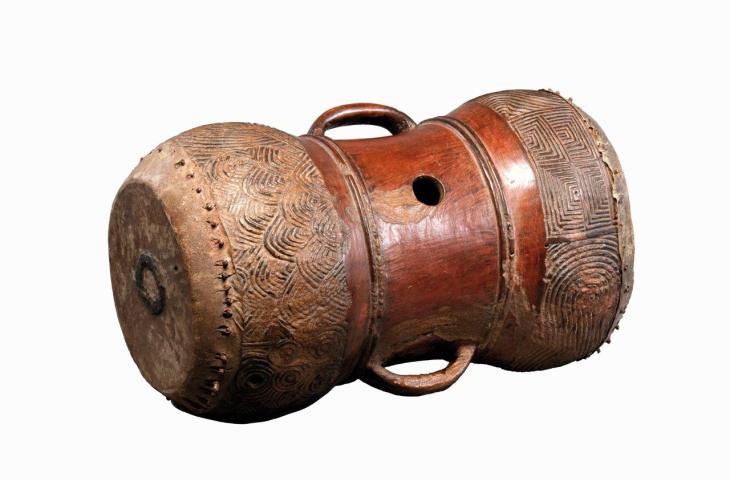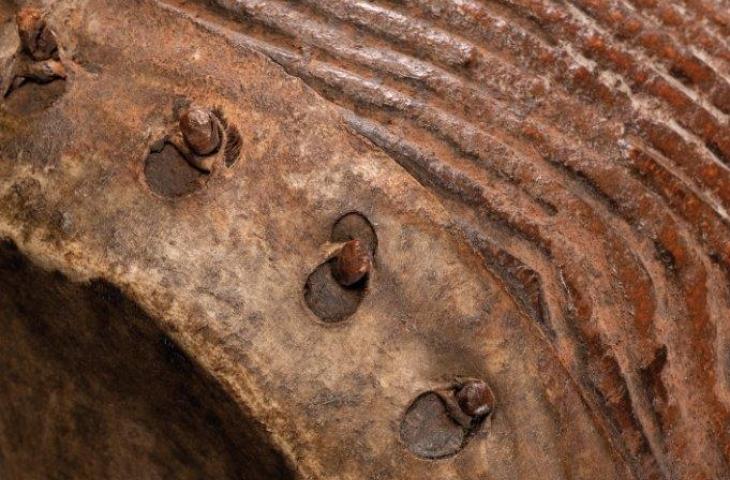Mukupiela

Mukupiela, Democratic Republic of the Congo, 20th century, inv. 1980.017
Mukupiela

Mukupiela, Democratic Republic of the Congo, 20th century, inv. 1980.017
The mukupiela is a drum of the Chokwe people, who dwell in the extensive and fertile border area between Angola and the Congo. They are known for their stylized and geometric decoration, which appears on the scored patterns on their skin and in the metal and wood engraving on their stools, sceptres, spears and musical instruments. The mukupiela is an important attribute of the Tshokwe kings. It is heard at all the important moments in their lives and accompanies them on their travels to announce their arrival. Whenever a chief died, the mukupiela was hung on the hedge of his dwelling, the skin slashed.
The instrument here has an hour-glass shape and two handles, and is made out of a single piece of wood; it is closed above and below with antelope or lizard skin. Mukupielas are slung on a cord from the player’s neck and held horizontally, the player striking both skins with his hands. One of the skins is warmed to make it sound slightly higher (‘small voice’) than the other (‘big voice’). A supplementary buzzing noise is obtained by gluing a spider-egg membrane onto the sliced-off top of a calabash and fixing this in an opening in the sound-box.